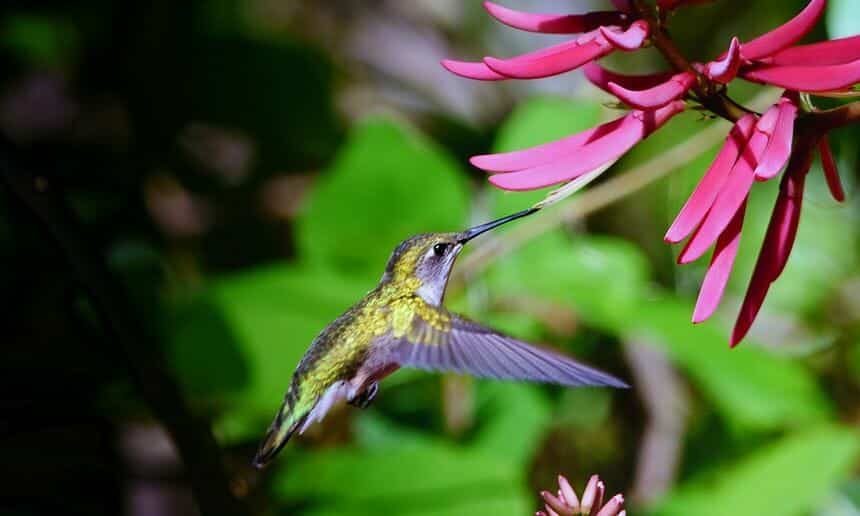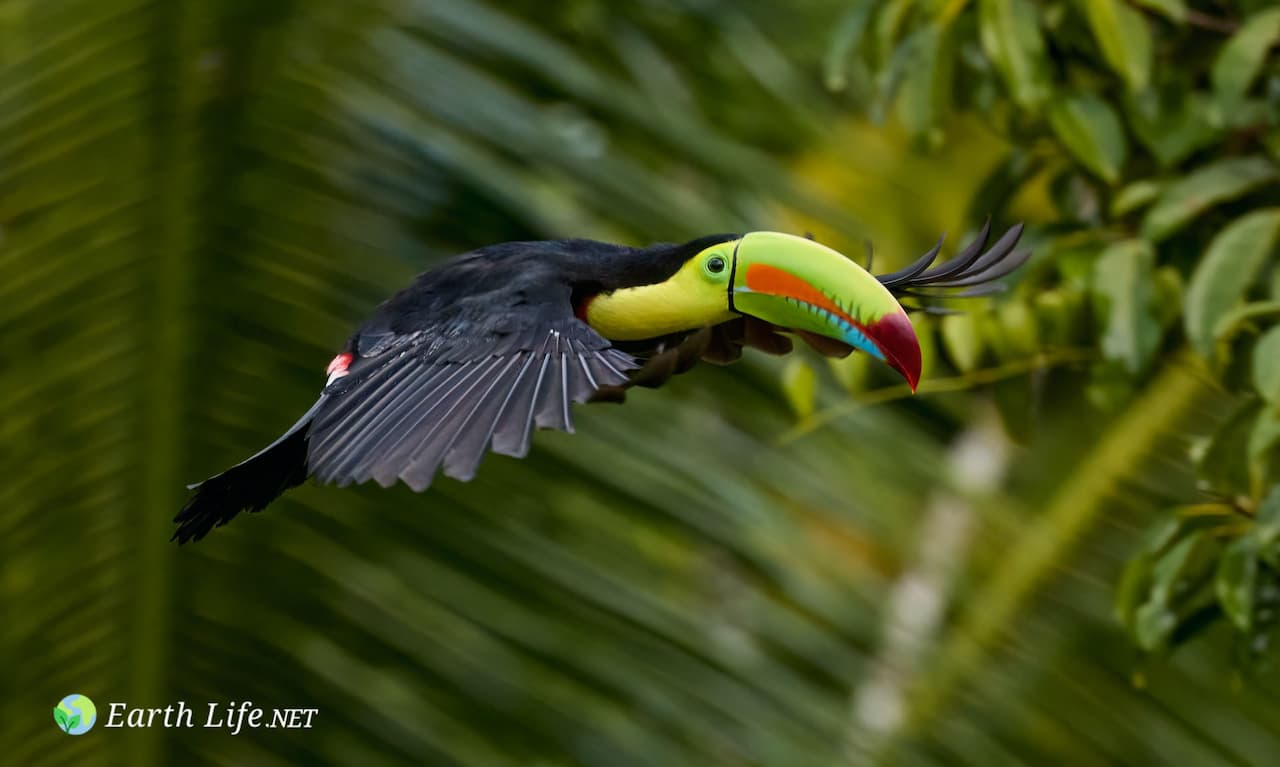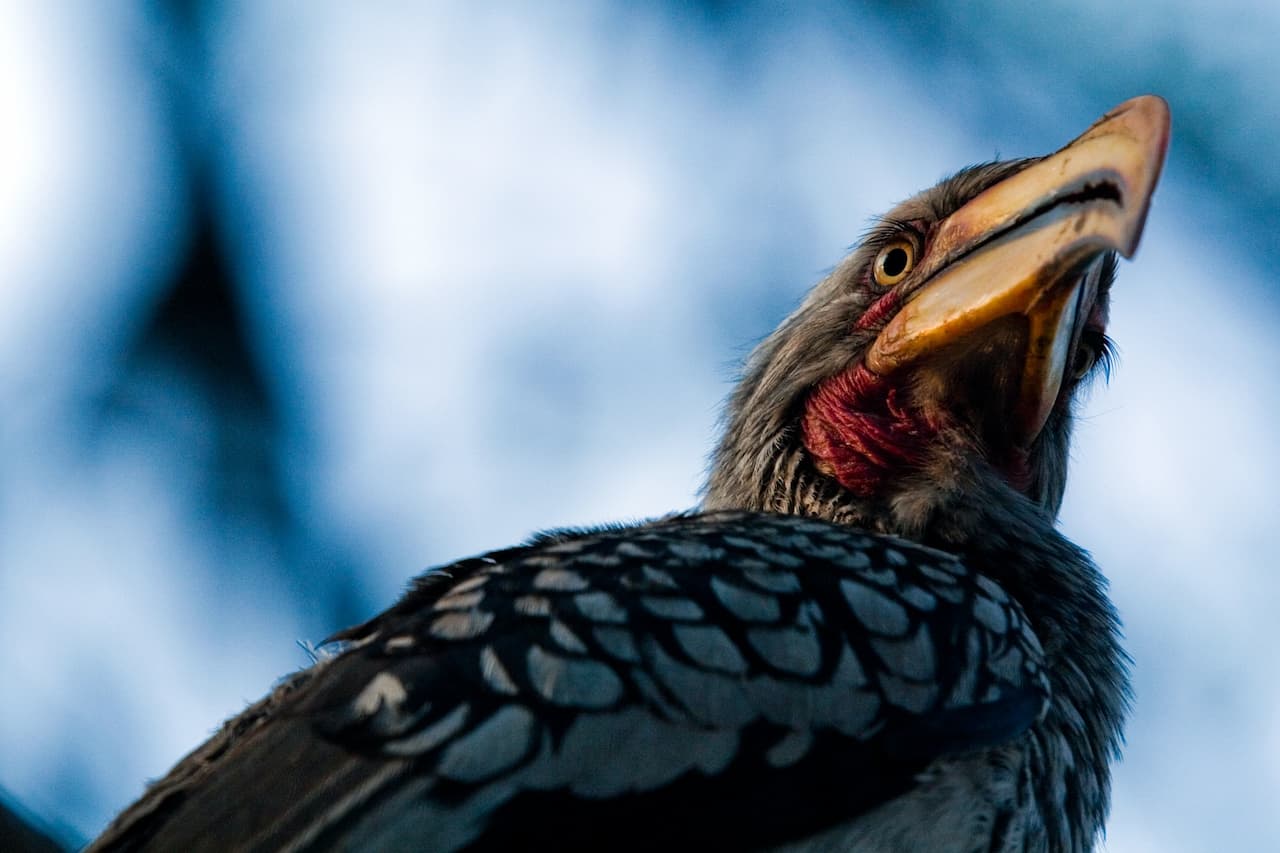Sick Hummingbird Behavior – And What To Do
Like all animals, hummingbirds are prone to sickness. Whether this is through natural causes, such as disease, or anthropogenic (human-related) causes, such as window collisions, there are ways in which you can help.
But first, you need to decide whether the hummingbird is sick. What signs do you need to look out for?
Signs of a Sick Hummingbird
Typically weighing no more than 7 grams (the weight of a standard pencil or two US pennies), hummingbirds are small. So small in fact, it may be hard to notice when a hummingbird is sick.
There are, however, some common behaviors exhibited by sick hummingbirds. Such mannerisms include:
- Prolonged hovering in the same spot
- Perched for long periods of time
- Discharge from body openings such as nostrils and mouth
- Lethargy
Diurnal, or active during the day, hummingbirds are agile and active birds. They spend their days hastily visiting flower to flower, lapping up sweet nectar. On average, they feed every 15 minutes.
Any one of the behaviors mentioned above is a sure sign that a hummingbird is sick (royalsocietypublishing.org).
So, that brings us to the next point.
What Causes a Hummingbird To Get Sick?
1 – Disease
Across the globe, a whole plethora of harmful microorganisms are waiting to exploit unsuspecting victims. Hummingbirds are no exception.

Certain hummingbird diseases can occur naturally in the surrounding environments, such as avian poxvirus. This virus causes tumors to grow across the body, with the beak one of the most affected regions.
Other harmful pathogens to hummingbirds are promoted by poor maintenance of feeders (maryland.gov).
Common hygiene-related diseases include:
Candidiasis
More commonly referred to as thrush, candidiasis is a fungal tongue infection. This infection makes feeding an almost impossible task, leading to starvation for these prolific feeders.
Candidiasis often develops when people add honey to their feeders. The honey, coupled with wet and warm conditions, creates a fermentation of bacteria – potentially fatal to hummingbirds.
Aspergillosis
Aspergillosis is a species of pathogenic fungus that is readily found on unsanitary feeders. Like many fungus species, airborne spores are produced. If inhaled, Aspergillus slowly destroys the gastrointestinal tract of hummingbird (royalsocietypublishing.org)
Common symptoms include discharge and diarrhea.
Salmonellosis
Proceed with caution if you suspect a hummingbird is suffering from salmonellosis. It is thought that this disease can pass from an infected bird to humans.
A common bacterium, Salmonella can contaminate food and water sources; especially at communal and overcrowded feeders. An infected hummingbird will be unable to absorb nutrients from food sources (oaktrust.edu).
Common symptoms include diarrhea, unkempt feathers, and extreme lethargy.
For any hummingbird suspected of being infected with a disease, it is recommended to seek immediate help from your nearest rescue center or veterinary clinic.
2 – Collisions
While hummingbirds are efficient and agile in flight, occasional airborne collisions do occur. Like many other bird species, windows pose a big threat whilst in flight.
But why?
You may be thinking that, because glass is see-through, a hummingbird simply may not see the window. Right?
Wrong.
During the day, surrounding vegetation and foliage reflect off windows. This projected window landscape, with bountiful sources of nectar, is an attractive invite to hummingbirds looking to replenish their energy stores.
As a result, many fast-flying hummingbirds can become severely stunned. A stunned hummingbird may not move or feed.
Another theory proposed suggests that during the breeding season, window collisions increase. This is because hummingbirds are fiercely territorial and will defend mates ferociously. A window may reflect a hummingbird, spurring the individual to attack its own reflection (wildlife.edu).
3 – Exhaustion
With an average wingbeat of 53 flaps per second, it is no wonder a hummingbird has such a high demand for food sources. Incredibly, hummingbirds can devour over half their entire body weight in nectar per day (askabiologist.edu).
Nectar is a sugar-rich fluid secreted by flowers. Hummingbirds need the complex carbohydrates found in sugars to fuel their metabolism. Perhaps not surprisingly, a hummingbird has one of the fastest metabolisms on planet Earth.
But exhaustion is a very real threat to hummingbirds if they don’t feed often enough. Let’s explore a little further:
4 – Entanglement
As crazy as it sounds, hummingbirds can become easily entangled. Most notably, within spider webs. Shudder.
In the tropics, many spiders will make a quick feast of an entangled hummingbird. Fortunately, the picture isn’t as gruesome in the Northern Hemisphere. Instead, hummingbirds readily use the silk of spider webs to construct nests, as well as snacking on a spider or two for extra protein.
Using specialized sticky silks, a spider’s web is designed to catch flying insects. Sticky enough to ensnare a careless hummingbird.
Panicked and stressed, a hummingbird may expend all its precious energy reserves in an attempt to free itself. Efforts, however, may be futile.
Starved and dehydrated, a hummingbird can become too exhausted to move. If not treated and cared for, it could perish (sora.edu).
5 – Habitat Loss
Now, this may sound quite extreme, but unfortunately, habitat loss is fueling a higher rate of exhausted hummingbirds.
You may think of great swathes of ancient rainforest as a contender for habitat loss. And while this may be true, most of us forget the little things in life:
Your local park, a patch of cardinal flowers, or that peaceful pergola with hummingbird feeders.
These small areas are a hive of activity and may act as a reliable food source. With urban expansion, more green spaces are being turned into concrete blocks, devoid of nectar-giving plants. You may get tired of having the garden the way it is and opt for a total modern makeover.
But with fewer plants to choose from, a hummingbird can easily become exhausted and starve if it doesn’t feed often enough (sciencedirect.com)
This may sound like doom and gloom but don’t give up just yet. Read on to discover how you can help sick hummingbirds…
What To Do if You Find a Sick Hummingbird
It must be noted that hummingbird care is notoriously difficult. If possible, first aid should be carried out by a trained professional, such as a veterinarian or wildlife expert.
However, finding someone suitable in time may prove to be quite a challenge.
So, what can you do to help a sick hummingbird?
Rescue Centers
It is always recommended to reach out to a rescue center or wildlife rehabilitator to ensure the highest rates of survival. After all, hummingbirds are incredibly fragile and delicate species.
You may have to transport the sick hummingbird to a nearby rescue center, where specialized equipment, cages, and food may be fully stocked. This will significantly increase their survival rates.
To find a local wildlife rehabilitator, click on the following link: Help Animal Now. By clicking “wildlife emergency”, a list of rehabilitators.
If traveling to a rescue center is not an option, a trained professional may be able to share advice and guidance over the phone. There are many small, and relatively simple, steps you can take to nurse a sick hummingbird.
Feeding a Sick Hummingbird
One of the easiest things you could do at home to help a sick hummingbird is to try feeding it.
In the wild, a hummingbird’s diet consists predominantly of small insects and nectar. The best option here would be to try and offer a sick hummingbird a homemade nectar solution – without using honey, of course.
To find out how to make your own nectar, click on the following link: Homemade Hummingbird Nectar.
Use a small pipette, or eyedropper, and place your nectar solution on the tip of the injured hummingbird’s beak. Do not force the hummingbird to drink, as this may drown the tiny bird.
Look out for a long, thin tongue moving in and out of the liquid, as well as any bubbles in the liquid – this is a sure sign the hummingbird is eating.
However, watch out for any gasping behavior, or bubbles coming out the side of the hummingbird’s month. If you see this behavior, stop feeding immediately. Try again in 30 minutes (nationalzoo.edu)
Dark spaces
This one is especially important if a hummingbird has had a collision with a window. Often, the bird may just be dazed and confused. Try this simple trick to nurse a dazed hummingbird back to health:
Place the bird in a dark container – a shoebox would be ideal. You want to create a calming environment for the hummingbird. This means placing the container in a quiet space, away from pets or potential predators (depts.washington.edu).
After 15 minutes, check the hummingbird’s progress; it may have recuperated and be fit for flight. Within this 15-minute window, resist the urge to handle or attempt to feed the small bird. If the hummingbird is still dazed, try again in another 15 minutes.
Remember, always open the container in an open environment. After all, you don’t want an escaped hummingbird flying around your house!
If the hummingbird hasn’t recovered in an hour, consider taking it to a wildlife rescue center.
How To Help Hummingbirds
So far, we’ve touched upon why hummingbirds get sick, and things you can do to make them better. Now, let’s take a closer look at steps you can take to reduce the likelihood of a hummingbird getting sick in the first place.
Window Pictures
No, I don’t mean sticking up your child’s favorite drawing on your windows.
Window pictures are a series of vertical and horizontal markings that break up the reflections on windows, preventing window collisions among hummingbirds (as well as other bird species).
There are a wide range of window techniques you can use to deter hummingbirds, such as decals, screens, and dot patterns.
For the most effective safeguarding measures, ensure no gaps larger than 2 inches are showing (peerj.com).
More Plants
This may not be a direct way in which you can help a sick hummingbird, but planting more plants is without a doubt one of the most important things you can do to help.
A selection of plant species in your garden can ensure a hummingbird has enough food year-round. Not only will the nectar sustain a hummingbird’s sugar requirements, but an increased plant diversity also attracts small insect pollinators that hummingbirds love to feast upon (science.com).
Some important food sources for hummingbirds include:
- Bee Balm
- Cardinal Flowers
- Zinnia
- Salvia
- Bleeding Hearts
Conclusion
Hummingbirds are amazing, yet delicate birds. They can become prone to sickness – disease, exhaustion, or collisions.
Taking a sick hummingbird directly to a rescue center will increase the survival rate dramatically.
If you can’t access a rescue center, try keeping the bird in dark spaces to help revive it, or try feeding an exhausted hummingbird with a simple sugar solution.
Be kind to nature.




